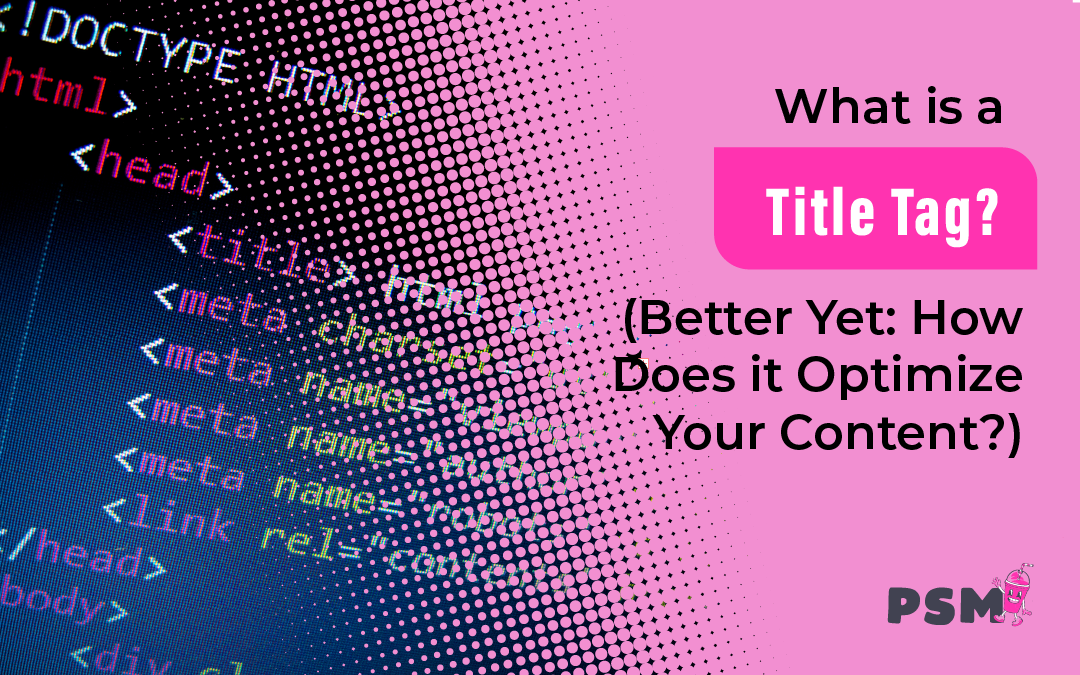Want your blog post to really pop online? Here’s the key.
For blogs and websites, a single element determines whether you’ll thrive online or not. The title tag: it’s a small thing, but important. You might be thinking, “What’s the big deal about a title tag?” Well, let me tell you – it’s the unsung hero of search engine optimization (SEO). Title tags are super important for blog success. Their purpose, benefits, and online optimization strategies will all be covered. Getting more views online is the goal. It’s all here.
What Is a Title Tag, Anyway?

A title tag, also known as a page title or SEO title, is the title of a webpage or blog post that appears in search engine results pages (SERPs). Your online presence depends on it; it’s the first thing searchers see. Think of it as the headline of your article, but instead of just grabbing the reader’s attention, it’s also speaking directly to search engines.
The Purpose of a Title Tag
So, why do title tags matter? The primary purpose of a title tag is to provide a concise and accurate description of your webpage or blog post. Your article’s description needs to do double duty: attract readers *and* tell search engines what it’s about. Think catchy and informative! Think of a title tag as a signpost; it directs users and search engines right to your information.
How Title Tags Optimize Your Blog Article
Now, here’s where things get really interesting. A well-crafted title tag can optimize your blog article in several ways:
Improved Search Engine Rankings
A relevant and descriptive title tag helps search engines understand the content of your page, increasing the chances of ranking higher in search engine results. This, in turn, drives more organic traffic to your website.
Increased Click-Through Rates
A compelling title tag can entice users to click on your article, boosting click-through rates (CTRs) and driving more traffic to your website.
Better User Experience
A clear and concise title tag sets user expectations, ensuring they find what they’re looking for when they land on your page. This improves the whole experience; people stay on the site longer and interact more.
Enhanced Brand Visibility

Consistent title tags across your website can reinforce your brand identity, making it easier for users to recognize and remember your brand.
Best Practices for Crafting Title Tags
So, how do you create title tags that optimize your blog article? Follow these best practices:
Keep it Concise
Limit your title tag to 55-60 characters, including spaces, to ensure it doesn’t get truncated in search engine results.
Make it Descriptive
Use keywords and phrases that accurately describe your content, making it easier for users and search engines to understand what your page is about.
Use Keywords Strategically
Incorporate relevant keywords naturally, but avoid keyword stuffing, which can lead to penalties from search engines.
Use Emojis and Special Characters
Add a touch of personality to your title tag with emojis and special characters, but use them sparingly to avoid looking spammy.
Avoid Duplication
Use unique title tags for each webpage or blog post to avoid duplication and confusion.
Test and Refine
Test different title tags, analyze their performance, and refine them to optimize your results.

The main point is…
SEO success often hinges on title tags; they’re surprisingly important. Descriptive, concise, and compelling blog titles are important. More people will read your stuff, your website will get more visitors, and it’ll become way more noticeable online. Think of a title as the first impression; you only get one shot. Remember, a well-written title tag is not just a nicety – it’s a necessity for online success. So, take the time to get it right, and watch your blog article shine online!


0 Comments